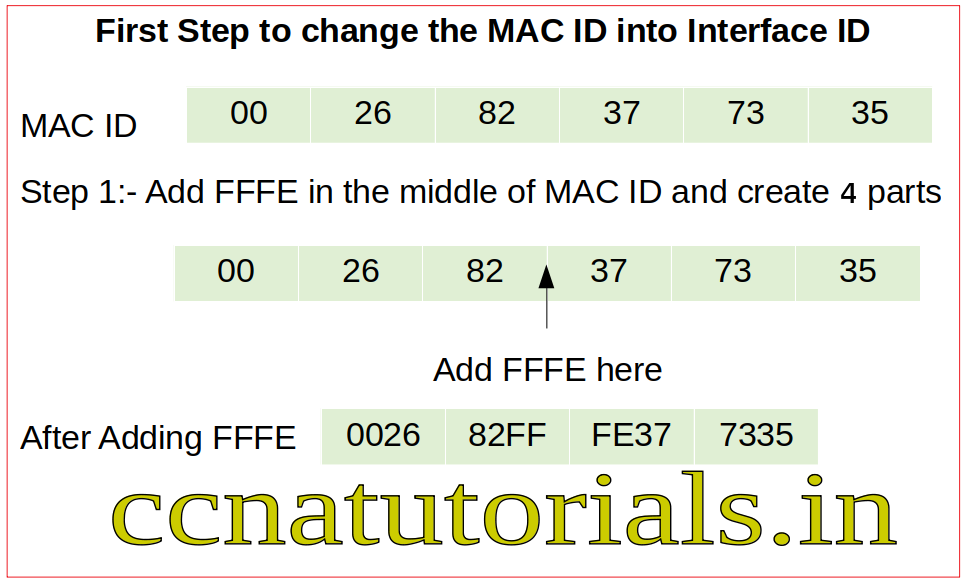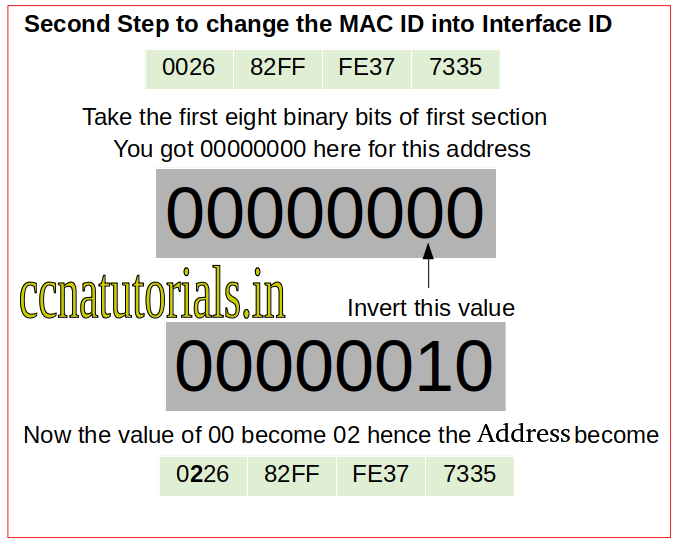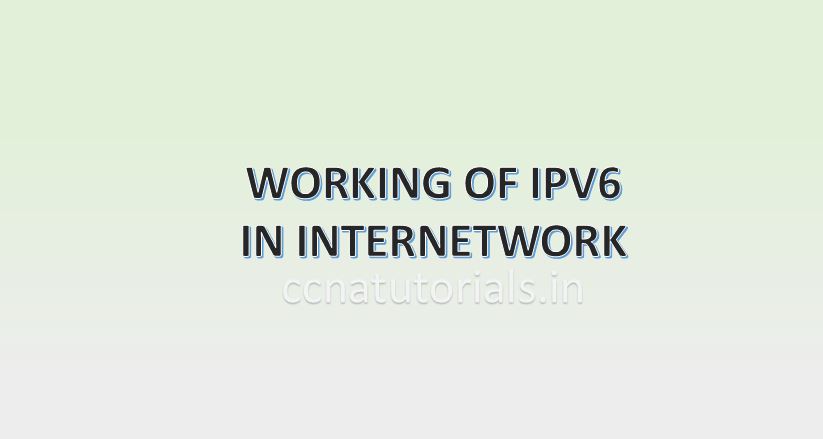Contents of this article
In this article I explain the working of IPv6 in internetwork. Internet Protocol Version6 IPv6 is a type of internet protocol. We know about IPv4 and works with IPv4 for inter-networking and local networks. IPv4 address is a combination of 8 bytes or 32 bits. Every device connected in a network or internet required an unique IP address. There are billions devices which works on internet. IPv4 have limited IP addresses that is 232.
Which are not sufficient in today scenario. To overcome this problem Internet Protocol Version6 IPv6 invented by IETF team. IPv6 address is a combination of 128 bits. So we have now 2128 addresses to use in inter-networking or internet. The numbers of IPv6 are billions of billions. These address provides security better than IPv4. Later I describe the security concern in Internet Protocol Version 6 IPv6. The main purpose of using Internet Protocol Version 6 IPv6 is to increase the IP address for devices connected in internet.
Initially the IETF ( Internet Engineering Task Force) developed the internet protocol to provide the communication between devices in a network. IPv4 developed to provide the unique identity to the devices of network. Internet was used by the cooperative organizations in these days. But now every one need internet via mobile or computer. So the addresses provided by IPv4 become less than the users. To overcome this problem NAT technique used in routers.
We know the types of IPv4 addresses like unicast, broadcast addresses. IPv6 address types also defined according to requirement of IPv4 address system. These addresses are required for data packet transfer in a network or internet. IPv6 address system have its own address systems like unicast, link local and unique local address and multicast address.
Working of IPv6 in Internetwork
Just like IPv4 the new address system IPv6 provides the data packets flow in a network. We require to configure the nodes and networking device for working of IPv6 in internetwork. The main purpose of any internet protocol is to identify the source and destination. After finding the source and destination the data packets forwarded to destination. This process goes from various processes and follows multiple protocols in internetwork. Working of IPv6 in internetwork depends on many factors. First thing is the allotment of IPv6 address to all devices. We use the stateless auto-configuration and DHCP to assign the IPv6 addresses.
Enable the IPv6 function in networking devices
All networking devices remains disable for IPv6 function. We require to enable the IPv6 traffic forwarding manually in routers. To enable the IPv6 packet forwarding run the below command in routers.
Router>en Router#config t Enter configuration commands, one per line. End with CNTL/Z. Router(config)#IPv6 unicast-routing Router(config)#do wr Building configuration... [OK] Router(config)#exit Router#
The above command enable the IPv6 traffic forwarding. As I told earlier by default all functions of IPv6 are disable in any router. So we need to enable the IPV6 traffic forwarding on each interface also. To do that we require to run the following commands on each interface.
Router>en Router#config t Router(config)#interface gigabitethernet0/0/0 Router(config-if)#IPv6 address 3241:00BD:0000:A000:0000:0000:0101:0012/64 Router(config-if)#IPv6 address 3241:00BD:0000:A000:0000:0000:0101:0012/64 eui-64 Router(config-if)#do wr Building configuration... [OK] Router(config-if)#exit Router(config)#exit Router#
In above command I added EUI-64 option. EUI stands for Extended Unique Identifier format which allow registration of MAC address and make the interface ID. Another command to enable the IPv6 traffic forwarding is enable see the below example.
Router# Router#config t Router(config)#interface gigabitethernet0/0/0 Router(config-if)#IPv6 enable Router(config-if)#do wr Building configuration... [OK] Router(config-if)#exit Router(config)#exit Router#
Configuration of Stateless Autoconfiguration (SLAAC) EUI-64 for working of IPv6 in internetwork.
Stateless autoconfiguration allows the device to introduce itself with a link-local unicast as well as with global unicast IPv6 addresses. The interface ID of an IPv6 address is of 64 bits but the MAC address is of 48 bits only. The extra 16 bits in IPv6 are FFFE which can be added in the interface ID of a device. The process is very easy to learn how the stateless autoconfiguraion works on a interface or router. The first 64 bits of IPv6 address are predefined by the network administrator. We need to configure the last 64 bits which are known as interface IP of the interface. It is similar to the MAC address of any interface.
We require two steps to get the 64 bits interface ID from a MAC ID. The first thing is to add the FFFE in the middle of the 48 bits MAC address. For example my MAC ID is 00:26:82:37:73:35. This MAC id combination of 48 bits. This MAC address will be written after adding the FFFE as 0026:82FF:FE37:7335. You see I added the FFFE in the middle of the MAC address. Now go to the next step

We need to change the 7th bit of the converted MAC. We know the binary format have only two digits 0 and 1. Now the next step is to invert the 7th bit and put the value in interface ID. In above example the first 8 bits 00000000 for 0026. We require to invert the 7th bit which is 0. After inverting the 7th bit i got 00000010. It is equal to 02 so the value 0026 become 0226.

Hence the MAC address 00:26:82:37:73:35 of IPv4 can be written in the form of IPv6 interface id as 0226:82FF:FE37:7335. I hope you understood what I have done above. You can try with another example the MAC address in IPv4 is AA:34:CC:45:22:21. After converting this MAC ID the Interface ID will be A834:CCFF:FE45:2221. Do it yourself I hope you do it well.
A host require to go through two basic steps to get autoconfiguration.
The first step is to getting the prefix of IPv6 address information. I explained above the interface ID can be changed from 48 to 64 bits by doing the above calculation. Host require the 64 bits prefix ID from the router. So host sends a router solicitation (RS) request as multicast to all routers via a ICMP message.
The second step is done by router. After getting the router solicitation from a host, the router send the prefix ID via router advertisement (RA) message in the form of ICMP.

After completion of both steps the host auto-configure the IPv6 address to its interface by adding the interface ID with the Prefix ID.
Configuration of stateful autoconfiguration DHCPv6.
We know the function of DHCP in IPv4 system. DHCP protocol assign the IP address to host dynamically which lie in the network. DHCPv6 do the same thing in the network the difference is of the address scheme only. In configuration of IPv6 addresses from DHCPv6 the RS (Router Solicitation) and RA (Router Advertisement) happens firstly as in stateless auto-configuration. If router available then the IPv6 address auto-configured automatically. If router not available in the network then DHCPv6 solicite message broadcasted by the DHCP server to all clients in the network. So in both case the host got the prefix ID of the IPv6 address. The IPv6 address auto-configured by adding the 64 bit interface ID with it.
This article is just about the working of IPv6 in internetwork along with The basic IPv6 configuration. I hope you understood the basic function of IPv6 configuration in a network. For any query or suggestion on this article you may contact us or drop a comment below. Your suggestions are always welcome by us.







I visited a lot of website but I think this one contains something special in it in it